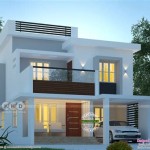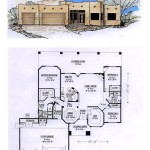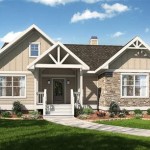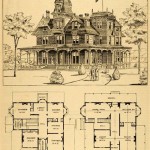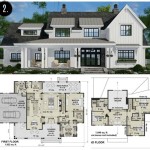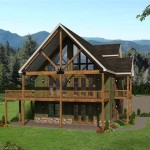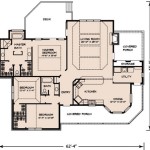Frank Lloyd Wright Home Plans: A Legacy of Organic Architecture
Frank Lloyd Wright, a name synonymous with architectural innovation and a uniquely American style, left an indelible mark on the landscape of residential design. His philosophy, deeply rooted in the concept of "organic architecture," emphasized harmony between human habitation and the natural world. Understanding Frank Lloyd Wright home plans requires examining the principles that guided his work, the common features that characterized his designs, and the enduring appeal that continues to inspire architects and homeowners today. He was not merely designing houses; he was crafting total environments designed to enhance the lives of the inhabitants.
Wright's career spanned over seven decades, a period that witnessed significant shifts in architectural trends and technological advancements. He consistently pushed boundaries, experimented with new materials, and challenged conventional notions of domestic space. His work reflected a deep understanding of human psychology and a commitment to creating homes that were not just functional but also aesthetically pleasing and spiritually enriching. The essence of his approach lay in integrating the building with its site, blurring the lines between indoor and outdoor spaces, and utilizing natural light to create a sense of openness and connection to the environment.
The Core Principles of Organic Architecture
Organic architecture, as championed by Wright, is more than just a style; it's a philosophy of design that prioritizes harmony, integrity, and the intrinsic qualities of the materials used. Several key principles underpin this approach:
Harmony with the Environment: This is perhaps the most fundamental aspect of organic architecture. Wright meticulously considered the topography, climate, and surrounding landscape when designing a home. He sought to integrate the building seamlessly into its environment, using natural materials that complemented the colors and textures of the site. Buildings were often nestled into hillsides, incorporated into rock formations, or strategically oriented to maximize sunlight and natural ventilation. This wasn't simply about aesthetics; it was about creating a symbiotic relationship between the structure and its surroundings.
Truth to Materials: Wright believed in honoring the inherent qualities of the materials he used. He avoided concealing or altering their natural textures and colors. Wood was celebrated for its grain, stone for its ruggedness, and concrete for its plasticity. He often incorporated these materials in their raw, unfinished state, allowing their natural beauty to shine through. This principle extended to the construction methods as well; Wright favored simple, honest techniques that highlighted the craftsmanship involved in building the home.
Open Planning: Breaking away from the rigid compartmentalization of traditional Victorian homes, Wright embraced open floor plans that promoted a sense of spaciousness and flow. Interior walls were minimized, allowing for greater flexibility and interaction within the living spaces. The living room, dining room, and kitchen were often integrated into a single, continuous space, creating a more communal and informal atmosphere. This open planning was not just about aesthetics; it was about fostering a sense of connection and interaction among the occupants of the home.
Integration of Interior and Exterior: Wright sought to blur the boundaries between the interior and exterior spaces. He achieved this through the use of large windows, sliding glass doors, and outdoor living areas such as terraces and patios. These elements allowed for natural light to flood the interior spaces and provided easy access to the outdoors. The goal was to create a seamless transition between the indoor and outdoor environments, allowing the inhabitants to feel connected to nature even when inside the home. This integration was often enhanced by the use of natural materials and landscaping that echoed the surrounding environment.
Emphasis on Craftsmanship: Wright believed in the importance of craftsmanship and attention to detail. He often designed custom furniture, lighting fixtures, and decorative elements for his homes, ensuring that every aspect of the design was consistent with his overall vision. He worked closely with skilled artisans and craftsmen to ensure that the quality of the workmanship was of the highest standard. This emphasis on craftsmanship extended to the construction of the home itself, with careful attention paid to the details of the carpentry, masonry, and other trades.
The Fireplace as the Hearth: The fireplace held a central symbolic and functional role in Wright's homes. He often positioned the fireplace at the heart of the living space, emphasizing its importance as a gathering place and a focal point for family life. The fireplace was not just a source of heat; it was a symbol of warmth, comfort, and community. Wright often designed elaborate fireplaces with intricate detailing, making them a prominent feature of the overall design.
Key Features Found in Frank Lloyd Wright Home Plans
While each Frank Lloyd Wright home is unique, certain features recur throughout his body of work, reflecting his distinctive architectural style and his commitment to organic principles. These features create a cohesive visual language that helps identify a Wright-designed home.
Horizontal Emphasis: Wright's designs are characterized by a strong horizontal emphasis. He achieved this through the use of long, low rooflines, cantilevered overhangs, and horizontal bands of windows. This horizontal orientation was intended to echo the natural landscape and to create a sense of groundedness and stability. The horizontal lines also helped to visually connect the building to the surrounding environment, blurring the boundaries between the interior and exterior spaces.
Cantilevered Overhangs: Cantilevered overhangs are a hallmark of Wright's prairie-style homes. These projecting rooflines provided shade from the sun, protected the windows from the elements, and created a sense of depth and dimension. The cantilevered overhangs also helped to visually connect the building to the surrounding landscape, extending the roofline beyond the walls and creating a sense of continuity between the interior and exterior spaces.
Ribbon Windows: Long, horizontal bands of windows, often referred to as ribbon windows, are another defining feature of Wright's designs. These windows allowed for ample natural light to flood the interior spaces and provided expansive views of the surrounding landscape. The ribbon windows also helped to visually reinforce the horizontal emphasis of the building, creating a sense of continuity and flow.
Flat or Low-Pitched Roofs: Wright typically favored flat or low-pitched roofs, which further emphasized the horizontal orientation of his designs. These roofs were often constructed with wide overhangs that provided shade and protection from the elements. The low-pitched roofs also helped to visually integrate the building into the surrounding landscape, creating a sense of harmony and balance.
Natural Materials: As previously mentioned, Wright was a strong advocate for the use of natural materials. He often incorporated wood, stone, brick, and concrete into his designs, allowing their natural textures and colors to shine through. He believed that these materials possessed an inherent beauty that should be celebrated, and he avoided concealing or altering them unnecessarily.
Built-in Furniture and Fixtures: Wright often designed custom furniture and fixtures for his homes, integrating them seamlessly into the overall design. Built-in seating, shelving, and storage units helped to maximize space and create a sense of order and harmony. These built-in elements were not just functional; they were also aesthetically pleasing, contributing to the overall visual cohesiveness of the home.
Geometric Ornamentation: While Wright's designs were often minimalist in their overall form, he frequently incorporated geometric ornamentation to add visual interest and detail. These geometric patterns were often inspired by nature, reflecting his commitment to organic principles. The ornamentation was typically subtle and understated, enhancing the overall design without overwhelming it.
The Enduring Appeal of Frank Lloyd Wright Home Plans
The designs of Frank Lloyd Wright continue to resonate with homeowners and architects for several reasons. His commitment to organic architecture, his innovative use of materials, and his emphasis on creating homes that are both functional and beautiful have made his work timeless and enduring.
Timeless Design: Wright's designs transcend trends and fads. His emphasis on fundamental principles such as harmony, balance, and natural light ensures that his homes remain relevant and appealing even decades after they were built. The focus on creating a cohesive and integrated design, where every element works in harmony with the others, contributes to the timeless quality of his work.
Connection to Nature: In an increasingly urbanized world, Wright's homes offer a refuge from the stresses of modern life. His designs prioritize a connection to nature, allowing inhabitants to feel grounded and at peace. The use of natural materials, large windows, and outdoor living areas fosters a sense of harmony and balance, creating a nurturing and restorative environment.
Individuality and Craftsmanship: Wright's homes are not mass-produced or cookie-cutter designs. Each one is unique and reflects the specific needs and desires of its inhabitants. The emphasis on craftsmanship and attention to detail ensures that every home is built to the highest standards, resulting in a durable and long-lasting structure. The personal touch and artistic vision that Wright brought to his work are evident in every detail, making each home a true work of art.
Functional and Livable Spaces: While Wright's homes are often admired for their aesthetic beauty, they are also highly functional and livable. The open floor plans, ample natural light, and integrated living spaces create a comfortable and inviting environment for families to gather and connect. The thoughtful consideration of human needs and desires is evident in every aspect of the design, making Wright's homes not just beautiful but also practical and enjoyable to live in.
Frank Lloyd Wright's legacy extends far beyond the realm of architecture. He was a visionary who challenged conventional thinking and transformed the way we think about the relationship between humans and the built environment. His home plans continue to inspire and influence designers and homeowners around the world, reminding us of the power of architecture to enhance our lives and connect us to the natural world. His ideas about space, light and materials are still very relevant in today's architectural discourse.

Frank Lloyd Wright Inspired Home Plan 85003ms Architectural Designs House Plans

Floor Plan The Elam House

An Evolving Aesthetic Frank Lloyd Wright S Home Studio In Oak Park Illinois The Craftsman Bungalow

Three Frank Lloyd Wright Unbuilt Houses Brought To Life As Digital Reconstructions

Frank Lloyd Wright Inspiration 20092ga Architectural Designs House Plans

Frank Lloyd Wright Inspired Home Plan 85003ms Architectural Designs House Plans

S First Frank Lloyd Wright House Blocked By Planning Inspector Archdaily

Frank Lloyd Wright House Floor Plans Historic American Homes Brand

5 Great Architectural Inspirations From Frank Lloyd Wright The House Designers

Frank Lloyd Wright Design Homes Usonian

